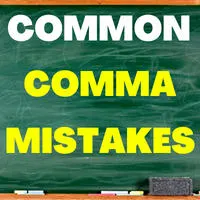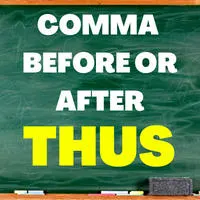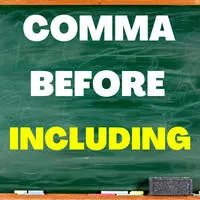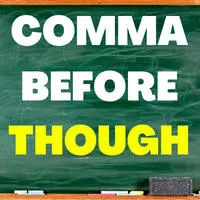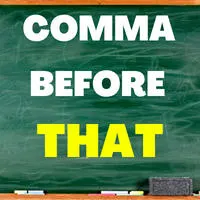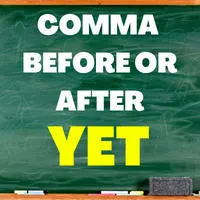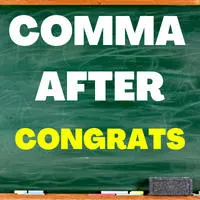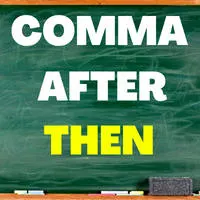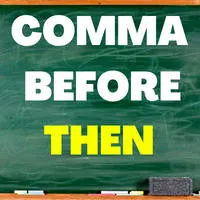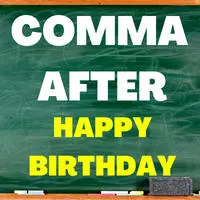To use a comma or not to use a comma, that is the question.
Are you firing off a round of emails to important business contacts and aren’t quite sure whether you are missing a comma, or whether you have included one where you shouldn’t have?
There is nothing more unfortunate than a misplaced comma when it matters most.
Instead of just hitting send and hoping for the best (or hovering your cursor over the “Send” button endlessly), let Linguaholic do the hard work for you.
Are you wondering whether to put a comma after “during this time”?
Or are you scratching your head about why some people put a comma after “best regards” and others don’t?
Whatever your comma-rules-related question, search it on our site and let us help you!
Placing a comma where it shouldn’t be, or forgetting to put it where it is supposed to be could lead to miscommunication.
In writing, knowing when and where to place commas precisely is not only an excellent and crucial skill to have – it makes communication a lot more efficient.
Don’t worry, though. Linguaholic is here to help!
On this page, you will find our most important comma rules articles, along with the most popular comma articles and the latest posts in this category.
But before we will get into all of that, let’s have a look at all the basic comma rules in English.
Comma Rules
1. Use a comma after introductions: Beginning of sentences
Maybe one of the easiest-to-remember and least confusing comma rules, you can never go sideways with this rule.
Most, if not all the time, you are supposed to separate your introductory expression from the rest of your sentence.
Introductory expressions can be connective adverbs like “nevertheless” and “next” and prepositional phrases like “to win the game” and “with peace in her heart.”
They can also be appositive phrases like “a distinguished gentleman,” participial phrases like “wheezing mildly,” and dependent clauses like “because of the rain.”
Remember to always set off your introductory expressions to make your main idea connected to the previous sentence, clearer in meaning, and even more exciting to read.
Here are some ways of how you can do all of these:
Examples:
Therefore, all you need is space.
With peace in her heart, she let go of all the burden.
An award-winning author, Rafael Mantegna has moved readers again.
Singing softly, dad put the baby to sleep in no time.
Although he had lost someone special, he was able to cope well.
2. Use a comma before FANBOYS: Coordinating conjunctions
The term “coordinating conjunctions” might sound a bit technical to the untrained ears, but they aren’t really that hard to remember. The acronym “FANBOYS” is the answer.
FANBOYS stands for the seven most popular coordinating conjunctions, namely, for, and, nor, but, or, yet, and so.
They are used to link two independent clauses together, making what we call compound sentences.
As a rule of thumb, the second independent clause should always come with a comma before it. This means that the comma goes right before the conjunction.
As long as you can identify independent vs. dependent clauses, you are always good to go with this comma rule.
Listed below are examples to show you how to do so:
Examples:
Simon had lost all hope, for he was not able to catch his flight of a lifetime.
This laptop has an anti-glare screen, and it seems to be working really well.
He didn’t mind her leaving, nor did he get surprised by her decision.
I can be here with you, but I can’t be here for you.
You can do what you want, or you can listen to your mom.
She has been financially secure all her life, yet she has also been emotionally deprived.
Leah has just started her new job, so her mom takes care of her kids now.
3. Use a comma after the first clause: Reversed complex sentences
Meanwhile, subordinating conjunctions are also what we use to create complex sentences. These include but are not limited to “although,” “because,” and “unless.”
Complex sentences are made up of at least one dependent and one independent clause, in which the independent clause comes first in a regular structure.
When we reverse the order of clauses, the dependent clause now begins the sentence. This clause is headed by the subordinating conjunction.
In a reversed complex sentence type, the comma comes at the end of the dependent clause, which also means right before the independent one.
To understand the explanation better, here are some examples:
Examples:
Since we can’t live forever, we have to embrace happiness during our lifetime.
Even though life can get tough at times, we still have to keep going.
Unless you want to keep sulking, get up and make peace with him.
If you really want her in your life, do something about it.
As soon as he left and closed the door, her tears fell like a waterfall.
4. Use commas to set off afterthoughts: Parenthetical ideas
Interruptive ideas or afterthoughts also need to be separated by commas. These ideas are more technically known as parenthetical expressions.
Parentheticals are not grammatically essential parts of sentences. Instead, they are added as stylistic or rhetorical devices to enrich their meaning.
Because of this, we have to bear in mind that commas are always necessary to set them off, no matter where they appear within the sentence.
Remember that removing a parenthetical from the original sentence would still leave a sensible and grammatical construction.
If what’s left doesn’t make any sense, then chances are you are dealing with a restrictive or essential idea.
Examples:
Lauryn, just so you know, is actually from Arizona.
His wife has never left him even during his darkest hours, luckily enough.
I can’t believe he has the courage, not to mention the money, to keep the business afloat.
My mom, way before she learned that my sister was pregnant, had always been open to the idea.
You can’t control everything, of course, because life is designed to be full of surprises.
5. Use commas before and after direct quotes
Direct quotes or quoted speeches always need commas every time they come with reporting clauses.
Reporting clauses are those words we use to explain who said the direct quote as well as how it was done.
In American English, the comma goes before the closing quotation marks if and when the reporting clause comes right after.
In British English, however, the comma goes outside the quotation if and when the quoted speech is not a complete sentence.
Examples:
(BrE) “That way”, the man shrugged.
(AmE) “This way,” the man said.
(BrE) “Yes”, she nodded.
(AmE) “No,” she shook her head.
In general, we can simply choose to place the comma before (inside) the closing quotation marks when the reporting clause follows afterward.
Example:
“If you’re going to ask the same question, the answer is still no,” he whispered.
However, we should place the comma right before the opening quotation marks (outside) when the reporting clause comes before the speech.
Example:
A stranger once asked, “Do you know where this is going?”
When the reporting clause interrupts the speech midway, two commas are needed: one before and one after.
The comma before the reporting clause goes inside the first half of the speech, but the comma after the reporting clause goes outside the second half of the speech.
Example:
“What if,” she breathily continued, “I’m missing out on my only chance of true love?”
6. Use a comma with direct addresses: Vocatives
A direct address is a concept used to refer to a message receiver when the writer is speaking to him or her directly in writing.
Direct addresses can be names of people, name titles, terms of endearment, and even animal and plant names.
We should always set them off with a comma when they begin or end a sentence. A pair of two commas are needed when they come midsentence.
This rule should always be applied in formal writing scenarios, yet we can be a bit more lenient in informal contexts.
Examples:
Hey, Karl. What’s up?
Sweetie, can you pass the salt?
Lucy, where are you?
Please do everything you can, doctor!
I haven’t seen her today, Miss Melvin.
7. Use a comma after greetings and sign-offs
We use greeting and sign-off expressions mostly in email writing. As this is a form of formal correspondence, we should know how to use our commas the right way.
Greetings or salutations need to use commas. The comma goes right after the name when it starts with “Dear.”
However, the comma goes before the email receiver’s name when we use more laid-back greetings like “Hi” and “Hello.”
The comma also goes right after the name of the person when we choose to omit “Dear,” “Hi,” and “Hello.”
Examples (Greetings):
Dear Daisy,
Hi, Ram.
Hello, everyone!
Mr. Herbert,
Felix G. Anderson, Esq.,
Commas also come with email sign-offs or complimentary closing remarks. These are expressions we use to formally end our email messages.
This rule should be easier to remember because the comma always goes at the end of the whole expression, no matter what it is.
Examples (Sign-offs):
Yours Sincerely,
Respectfully Yours,
Best Regards,
Warmest Regards,
Cheers,
8. Use commas to list three or more items in a series
Perhaps also one of the easiest yet trickiest rules, using commas when listing items in a sequence or series is quite a headache for some.
This is so because some writers would recommend omitting the comma before the conjunction when the list is clear enough.
As a general rule, though, we can always go with using commas after each item for as long as there are at least three of them.
We can list down multiple verbs, prepositional phrases, nouns, adverb phrases, and even clauses in a series.
Examples:
You can sleep, travel, or meditate. (verbs)
She won’t apologize to you, to me, nor to anybody. (prepositional phrases)
You need to get some tomatoes, peppers, and pasta. (nouns)
She looked for him around the house, around the neighborhood, and through the streets. (adverb phrases)
My son thinks that someday he would be a firefighter, that he would be an astronaut, and that he would be like his father. (clauses)
9. Use commas to separate streets, cities, states, and time zones
Commas should also appear in addresses, especially when they are used as parts of a sentence rather than written in block format.
Similarly, time zones that are written as part of a sentence also need to follow certain comma rules.
With addresses, we have to use a comma between the city and the state name. Another comma is needed after the state name when the sentence further continues.
Example:
She moved back to Macon, Georgia, to live with her mom.
When we have to include the street details, another comma should come before the city. A comma is still used to separate the city and state.
Example:
You can find them at 972 Sundown Lane, Austin, Texas.
However, when we add the zip code after the state, there should be no comma between the state and the zip code.
Example:
Kindly send it to 4079 Willow Street, Palm Springs, California 92262.
If you want a more complete address format, you can also include your building and apartment number. Commas should still separate them from the other elements.
Example:
I live at 9309 Clinton Road, Building 1, Apartment 202, Great Bend, KS 67530.
Time zones might be slightly trickier than addresses, but here’s the rule: no comma is needed when the time zone is abbreviated and comes after a clock time.
But, a comma is already needed when the time zone is spelled out and comes after a clock time.
Examples:
Can we have the meeting at 4:30 p.m. PST? (no comma)
Are you available at 6 p.m., Eastern Standard Time? (with a comma)
When a clock time and date come before a spelled-out time zone, commas should also be used. A comma after the time zone is also used when the sentence still continues.
Example:
At 7:00 a.m., August 6, 2011, Pacific Standard Time, the negotiations began.
If you choose to use time phrases like “in the morning” and “in the evening” instead of time indications like “a.m.” and “p.m.,” a comma should still come before the time zone.
Example:
The war ended at 11:15 in the morning, Central Daylight Time.
However, no comma should be used when the time zone is placed within parentheses.
Example:
Would 8:00 a.m. (India Standard Time) work for you? (no comma)
No comma should also be used when the time zone is used as a grammatically restrictive or essential element of the sentence.
Example:
Please bear in mind that our reference point should always be Australian Central Standard Time. (no comma)
10. Use commas before or after common Latin abbreviations
Latin abbreviations also need commas when they appear within sentences. Some of the most common ones we use today are “e.g.,” “et al.,” “i.e.,” “etc.,” and “Ph.D.”
A comma should come after “e.g.,” when it is followed by authors’ names. This format is often found inside parentheses in academic papers.
Examples:
Other studies (e.g., Canson, 2016; Flint & Ashford 2018; and Furlow 2021) found similar results.
Unless you are using “et al.” as part of a series, no comma should be used before or after it. No period should also come after “et” because it is not an abbreviation.
Example:
McKinley et al. (2017) also found that there is no significant difference between x and y.
Two commas should come around “i.e.” when it is used as a clarifying element within a sentence.
Example:
Our store will keep offering discounts until the end of the month, i.e., 25% off on weekdays.
Two commas should also be used around “etc.” when it occurs somewhere in the middle of the sentence.
Example:
Greenland, Iceland, Sweden, Norway, etc., are Scandinavian countries.
Two commas are also needed around “Ph.D.” when it is used as a name suffix and the sentence continues afterward.
Example:
Charlie Greene, Ph.D., will be our speaker today.
Comma Rules Basics (Start Here!)
Comma Rules: Most Popular Articles
Latest Posts in “Comma Rules” on Linguaholic
- Comma after ‘Tomorrow’ at the Beginning of The Sentence
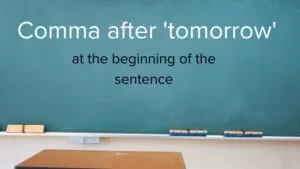
- Comma before “before” — Rules & Grammar
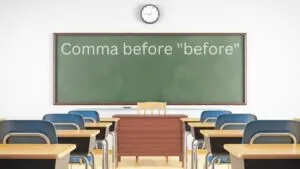
- Comma before Brackets — All You Need to Know

- Comma after “basically” — All You Need to Know

- Comma before “both” — Here are the Rules
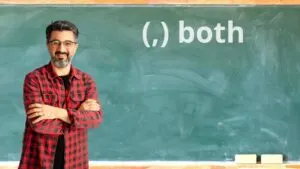
- Comma before “based on” — All You Need to Know

- Commas with Quotes — All You Need to Know
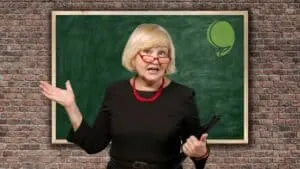
- Comma before “via” — All You Need to Know

- Comma before “yesterday” — All You Need to Know
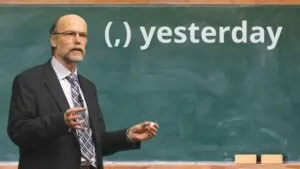
- Comma after a City and a State — Punctuation Rules

- Comma Before “through” — Punctuation Guide

- Comma after an Exclamation Point (Exclamation Mark) — Rules
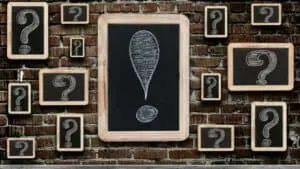
- Comma after “eventually” — Here’s What You Need to Know

- Comma after “During this time” — Punctuation Guide

- Comma after “by the way” — The Ultimate Guide
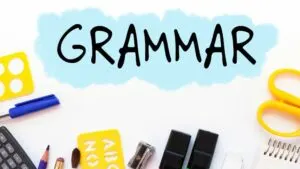
- Comma after “besides” — The Ultimate Guide

- Comma after “beforehand” — Punctuation Rules

- Comma Before a “Time Zone” — Punctuation Guide

- Comma before “whenever” — Rules & Grammar

- Comma before “which” in the UK (British English) — Rules

- Comma Before a Vocative — Punctuation Rules

- Comma Before a Verb — Punctuation Tactics

- Comma before “without” — Punctuation Guidelines

- Comma after “best regards” ― All You Need to Know

- Comma after “especially” — The Ultimate Guide

- Comma Before “considering”: Your Go-to Manual

- Comma before “indeed” ― Your One-stop Guide

- Comma after “Hey” — The Ultimate Guide

- Comma after “Hello” — Rules & Plenty of Examples

- Comma Usage with the Phrase “no thanks” — Explained

- Comma after a Period — The Complete Guide

- Comma Usage with the Phrase “not one but two” — The Answer

- Comma before or after “not to mention” — The Complete Guide

- Comma after “last but not least” — The Definitive Guide

- Comma Cheat Sheet — All The Rules in a Compact Format

- Comma after “Welcome” — The Ultimate Guide

- Comma after “sorry” — The Complete Guide

- Comma before “whom” — The Complete Guide

- Comma before or after “in addition”: The Definitive Guide

- Comma before “whose”— The Definitive Guide

- Comma before “according to” — The Complete Guide

- Comma after “usually” — A Comprehensive Guide

- “This in turn” — Comma Usage Rules Explained in Great Detail

- Comma before or after “per se” — The Ultimate Guide

- Comma Usage with Fanboys — The Complete Guide

- Comma after “ultimately”: A Comprehensive Guide

- Comma after “next” — The Complete Guide

- Comma after “occasionally” — The Definitive Guide

- Comma after a Quotation — A Comprehensive Guide

- Comma after “furthermore” — A Comprehensive Guide

- Comma before “like” — A Comprehensive Guide

- Comma before “which” — A Comprehensive Guide

- Comma before “due to”: The Complete Guide

- Comma after “luckily”: A Comprehensive Guide

- Comma before “such as”: The Ultimate Guide

- Comma before or after Parenthesis — The Ultimate Guide

- Comma after “please” — A Comprehensive Guide

- Comma after “perhaps”: The Ultimate Guide

- Comma before “LLC”: A Comprehensive Guide

- Comma after ‘then’: The Ultimate Guide

- Comma after “finally” — The Ultimate Guide

- Comma after Salutations like Hi, Hello or Dear — Answered!

- Comma after “typically”: The Definitive Guide

- Comma before “as well as”: The Definitive Guide

- Comma after “of course”: The Definitive Guide

- Comma before “and” in a List — The Definitive Guide

- Comma before a Country Name — A Comprehensive Guide

- Comma before “etc.” — The Ultimate Guide

- Comma after Congratulations: The Definitive Guide

- Comma before “by”: The Definitive Guide

- Comma after “therefore”: The Definitive Guide

- Comma after “for example”: The Definitive Guide

- Comma before “if” ― All There is to Know!

- Comma before “for example” — The Complete Guide

- “High Comma” — Here’s What It Really Means!

- Comma before “than” — All You Need to Know

- Comma before “that” — The Only Guide You’ll Ever Need!

- Comma Before A Subordinate Clause — The Complete Guide

- Comma after “suddenly” – All You Need to Know (And More)

- Comma after “overall”: The Definitive Guide

- Comma after “yesterday”: The Definitive Guide

- Comma before “hence”: The Definitive Guide

- Comma before “please” – The Complete Guide

- Comma after “after all”: The Complete Guide

- Comma before “after all”: The Complete Guide

- Comma after “hence”: The Definitive Guide

- Comma before an Ampersand (&): The Definitive Guide

- Comma before “rarely”: The Definitive Guide

- Comma before “really”: The Definitive Guide

- Comma Before “resulting in”: The Definitive Guide

- Comma before “especially” — All The Rules & Examples

- Comma after “Happy Birthday”: The Definitive Guide

- Comma Before a “Relative Clause”: The Definitive Guide

- Comma Before a Relative Pronoun — The Definitive Guide
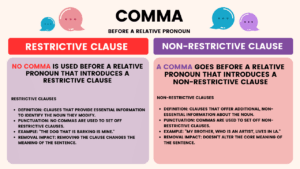
- Comma before “respectively”: The Definitive Guide

- “Including but not limited to” — Comma Rules & Usage
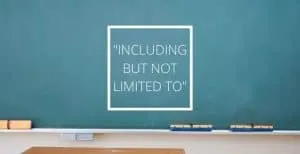
- Comma before or after “in fact”: The Definitive Guide

- Comma after “often”: The Definitive Guide

- Comma after “apparently”: The Definitive Guide

- Comma before “provided”: The Definitive Guide

- Comma before or after “obviously”: The Definitive Guide
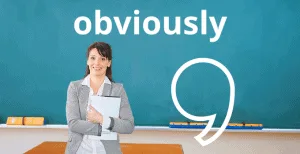
- Comma before “per se”: The Definitive Guide

- Comma before “no matter”: The Definitive Guide

- Commas in Adresses (Street, City, State, etc.): Master Guide

- Comma before “nor”: The Definitive Guide

- Comma before or after Names (Direct Address): Ultimate Guide
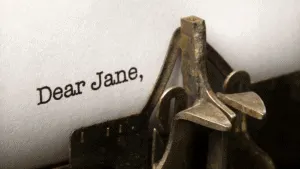
- Comma before or after “or”: The Definitive Guide

- Comma Before “not”: The Definitive Guide

- Comma after “First”: The Definitive Guide

- Comma after Book Titles: The Definitive Guide

- Comma after “e.g.“: The Definitive Guide

- Comma before or after “meanwhile”: The Definitive Guide
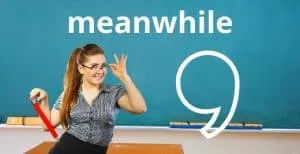
- Comma Before With: The Definitive Guide

- Comma after Abbreviations: The Definitive Guide

- Comma before or after “however”: The Definitive Guide

- Comma before or after “although”: The Definitive Guide

- Comma after “and”: The Definitive Guide

- Coma Vs. Comma: Here’s How to Tell Them Apart
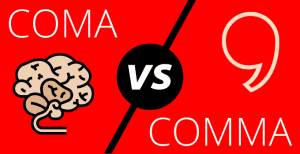
- Comma before or after “despite: The Definitive Guide

- Comma before or after “so”: The Definitive Guide

- Comma before or after “in particular”: The Definitive Guide
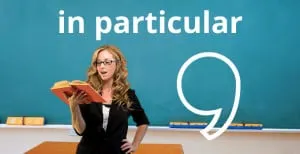
- Comma before or after “unfortunately”: The Definitive Guide

- Comma after “thank you”: The Definitive Guide

- Comma before “albeit”: The Definitive Guide

- Comma before “too”: The Definitive Guide

- Comma after “currently”: The Definitive Guide

- Comma before or after “also”: The Definitive Guide

- Comma before or after “nonetheless”: The Definitive Guide

- Comma before “whereas”: The Definitive Guide

- Comma before or after “now”: The Definitive Guide
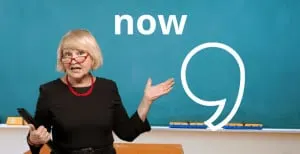
- Comma before “except”: The Definitive Guide

- Comma before or after “thus”: The Definitive Guide

- Comma before “and”: The Definitive Guide

- Comma before or after “instead”: The Definitive Guide

- Comma before “thereby”: The Definitive Guide

- The 6 Most Common Comma Mistakes and How To Fix Them

- Comma after “yes”: Rules & Examples

- Unnecessary Commas: Here’s When NO Comma is Needed

- Comma before a Gerund: The Definitive Guide
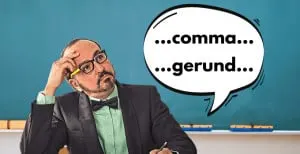
- Comma after “recently”: The Definitive Guide

- Comma after “hopefully”: The Definitive Guide

- Comma after “oh”: Here’s When You (Don’t) Need One

- Comma before or after “either”

- Comma before or after “yet”: Rules & Examples

- Comma after “Today”: Rules, Tips & Examples

- Comma after “sometimes”: The Definitive Guide

- “Most if not all”: Does This Expression Need Commas?

- Comma before “who”: The Definitive Guide

- Comma before “including”: Here’s What You Need To Know

- Comma Before “since”: Rules & Examples

- Comma before “where”: Rules and Examples

- Comma before “until”: The Complete Guide

- Comma before “though”: Rules, Tips & Example Sentences

- Comma before “anyway”: Here’s What You Need to Know

- Comma Before “Unless”: Rules, Usage & Examples

- Comma Before “Along (with)”: Rules & Examples

- Comma Before “Then”: Rules & Examples

- Comma Before “Even”: The Definitive Guide

- Comma Before “Rather”: The Definite Guide (Rules & Examples)

- Comma Before or After “Regardless”: Rules & Tips






